- Contents
- Editors' Note
- Acknowledgments
- Dickinson's Transplantation of Citizenship in the Earth: An Un-Silencing by Beth Staley
- “We send the Wave to find the Wave”: Dickinson’s Wave-Particle Duality by Mary Loeffelholz
- “Then quiver down, with tufts of Tune –”: Dickinson’s Palpable Soundscapes by Joan Wry
- “Buccaneers of Buzz”: Dickinson’s Humanimal Poetics by Alison Fraser
- Going to Sea in Emily Dickinson’s Poetry: Decentered Humanism and Poetic Ecology by Brian Yothers
- Coda: Natural Messages and Aesthetic Pleasure in Emily Dickinson’s Nature Writing by Grace Mei-shu Chen
“We send the Wave to find the Wave”: Dickinson’s Wave-Particle Duality by Mary Loeffelholz
We send the Wave to find the Wave –
An Errand so divine,
The Messenger enamored too,
Forgetting to return,
We make the wise distinction still,
Soever made in vain,
The sagest time to dam the sea
is when the sea is gone – (Fr. 1643A)
For at least some readers of the 21st century, this brief poem from the final years of Dickinson’s life reads almost irresistibly as a thought experiment in quantum mechanics, like the imaginary microscope that Werner Heisenberg came up with to illustrate his uncertainty principle. In Heisenberg’s microscope, if a researcher tries to locate an electron with a beam of light, a photon that collides with that electron will impart momentum to the electron, and in doing so will blur the observer’s characterization of the electron’s position. The shorter and more energetic the wavelength of the light impinging on the electron, the more precisely the electron’s location can be measured, but the more momentum is imparted to the electron in the process, thus blurring its location by the effort of determining it.[1] So much for damming the sea: the electron under this imaginary microscope looks less and less like a discrete particle to be pinned down and more like a continuous curve of probable locations—a wave function. In Dickinson’s words, “We send the Wave to find the Wave –” (Fr. 1643A/MS AC 641).

Fig. 1. AC 641, “We send the / Wave to find / the Wave –” (detail), about 1884. Courtesy of Amherst College Archives & Special Collections.
Dickinson’s lines survive in the draft of a note intended for her Norcross cousins, Louise and Frances, where they appear with an introductory sentence—“A Tone from the old Bells, perhaps might wake the Children”—that Dickinson’s editor Ralph Franklin glosses as a reminder to her cousins to write. Dickinson was not, of course, intentionally writing about quantum mechanics. Heisenberg articulated his uncertainty principle, and imagined his microscope, in the late 1920s. And yet the intellectual milieu of Dickinson’s work, especially in the last decades of her life, was not so very far removed from the foundations of the twentieth-century revolution in physics. The science and technology of electromagnetism, and more broadly of waves and their propagation, defined the nineteenth century. As the ample scholarship on her scientific education and curiosity has demonstrated, Dickinson had a lively apprehension of the visual spectrum and a range of other electromagnetic phenomena and deployed her knowledge in her poetry.[2] Of course Dickinson is not the unacknowledged mother of quantum mechanics; it is, though, entirely possible that by 1884 she was writing in mindfulness of the science behind the telephone and the phonograph.
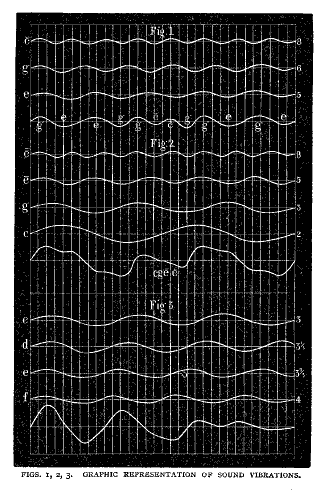
Fig. 2. Prescott, George B. “The Telephone and the Phonograph,” Scribner’s Monthly: An Illustrated Magazine for the People, 15.6 (April 1878): 849.
Courtesy of Cornell University Library.
The above illustration of sound wave forms comes from a long and absorbing article on “The Telephone and the Phonograph” published in Josiah Holland’s Scribner’s Monthly in April 1878. Dwelling on the new technologies’ power to conquer both distance and time, the author, George Prescott, speculates that “Friends at a distance will . . . send to each other phonograph letters, which will talk at any time in the friend’s voice when put upon the instrument. How startling also will it be to reproduce and hear at pleasure the voice of the dead!” (857). Marvelous as these applications of the new technologies may be, Prescott also takes considerable pains to explicate the wonders of the fundamental science behind them. This “graphic representation of sound vibrations,” he explains, signifies the alternating compression and rarefaction of the atmosphere, the “elastic medium” through which sound reaches the ear. Simple tones, composite chords and discords can all be represented graphically as the sum of their total forces of expansion and compression; “It is, therefore, easy to understand that if, by any means whatever, we can produce vibrations whose curves correspond to those of a given tone or a given combination of tones, the same impression will be produced upon the ear that would have been produced by the original tone” (850). Giving sound a graphic representation implies its reproducibility over time and space, “by any means whatever.” Indeed, all sound, scientifically understood, is already action at a distance: “the sensation which we call sound is excited by the action of the vibrations of the atmosphere upon the tympanum or drum of the ear, [which] are conveyed from the tympanum to the auricular nerves in the interior parts of the ear, by means of a mechanical apparatus of wonderful delicacy and precision of action,” the anvil, hammer and stirrup bones of the inner ear. The telephone extends this marvelous circuit by “controlling the formation of what may be termed the electric waves” so as to reproduce “vibrations at a distance” (851). Whether it issues from Dickinson’s “old Bells” or from Alexander Graham Bell’s new telephone, all sound sends the wave to find the wave. Translated from air to electricity to diaphragm to air to tympanum to bone to nerve, or through any part of this circuit, tones preserve their distinctive graphic profile in propagating from one elastic medium to the next. Under this description, the sensible world becomes an undulatory world and an intermedial world (to borrow the term from Sabine Kim in her essay on Dickinson and the phonograph).
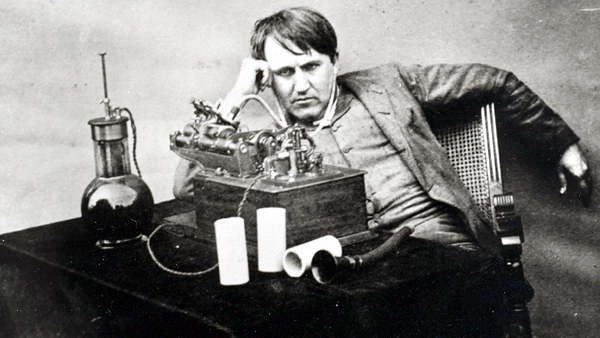
Fig. 3. Mr. Edison at the close of five days and nights of continued work perfecting the early wax cylinder type of phonograph, June 16, 1888.
“Friends at a distance will then send to each other phonograph letters, which will talk at any time in the friend’s voice when put upon the instrument. How startling it will be to reproduce and hear at pleasure the voice of the dead! All these things are to be common, everyday experiences within a few years.” – George Prescott, 857
*
My topic in this essay is the relationship, in Dickinson’s writing, between two competing descriptions of the world, the “undulatory” and the atomistic. Twentieth-century physics would come to call this “the wave-particle duality,” as explored through Heisenberg’s microscope among many other virtual and real experiments. In earlier forms, these competing descriptions of the world were available to Dickinson through the mediation of such authorities as Edward Hitchcock, whose essay of 1857 on “The Wonders of Science Compared with the Wonders of Romance” juxtaposed the well-established atomistic theory of matter with the increasingly dominant “undulatory theory” of light and sound. For Hitchcock, the practical success of “modern science” in dividing “matter both mechanically and chemically” ratifies Isaac Newton’s atomistic description of a world composed of “massy, hard, impenetrable, moveable particles,” subject to no further division or causality, “conduced to the end” for which God formed them (142). Applied to light, however, the atomistic theory breaks down. Hitchcock’s thought experiment of numbering the light particles emitted by a single candle yields barely imaginable results; if light were material and particulate, as much of noon as we could take between our finite eyes might well “destroy the organs of vision” (143). Hence the appeal of the “undulatory theory of light” (143), in which light like sound is conceived as a wave propagated through a subtle elastic medium, the light-bearing ether.
The ether road comes to a dead end in twentieth-century physics, and the impenetrable atom is split; but not in the vernacular physics of Dickinson’s poetry, where atomistic and undulatory descriptions of the world co-exist in creative tension. Dickinson’s atomistic world is one of fateful individuation yoked to imperative desire. It marries Christian eschatology to Newtonian tautology: the atom is what it is, it may be revealed but not altered or divided; therefore, desire is what it is—conserved, like matter, through every transformation. The atomistic description of the world allows Dickinson to call upon “The Chemical conviction / That Nought be lost” to
Enable in Disaster
My fractured Trust –
The Faces of the Atoms
If I shall see
How more the Finished Creatures
Departed Me! (Fr. 1070A/MS A 92-11/12, about 1865)
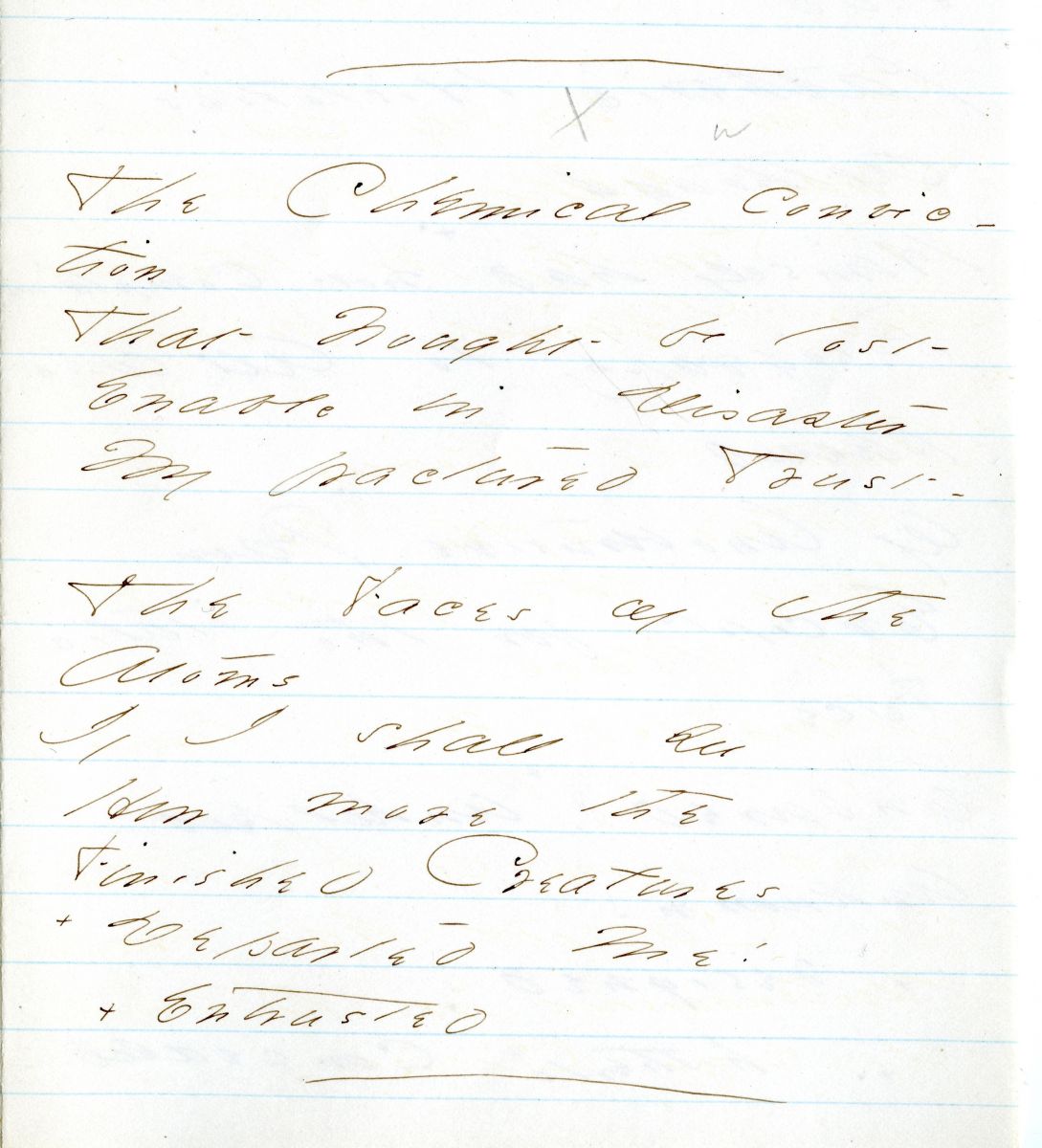
Fig. 4. AC 92-11/12, “The Chemical convic -/ tion,” about 1865.
Courtesy of Amherst College Archives & Special Collections.
Atomism’s concern for dividing “matter both mechanically and chemically” into its constituent particles imprints Dickinson’s characteristic wordplay with dividing mass nouns into individuals—“a sand,” “a hay.” The atom is Dickinson’s figure for the final revelation of individual identity in the Resurrection, where each “separate Consciousness” (Fr. 653A) absorbs its unique doom within the unthinkably plural crowd.
Dickinson’s undulatory world may be harder to bring into focus. In contrast to the atom, the wave lacks an individuating face. A poem dated by Franklin to 1877 associates the wave-world with the “effacing Fathom” (Fr. 1388A, about early 1876) of an unmarked watery grave:
Abhorrent is the Rest
In undulating Rooms
Whose Amplitude no end invades –
Whose Axis never comes (Fr. 1446A/MS AC 506, about 1877)
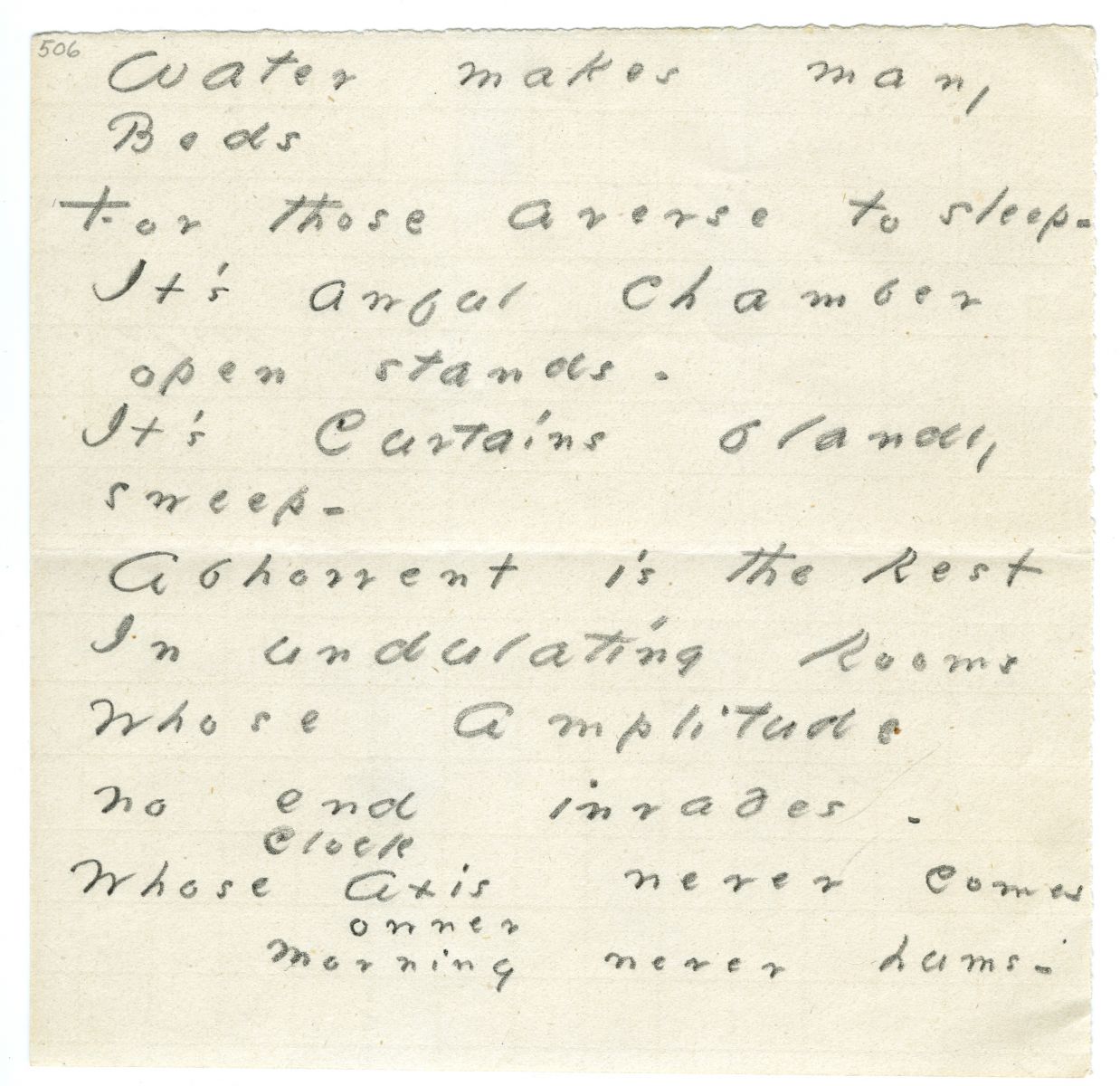
Fig. 5. AC 506, “Water makes many / Beds,” about 1877.
Courtesy of the Amherst College Archives & Special Collections.
Dickinson’s mathematical description of waves in this poem anticipates or echoes George Prescott’s graphical representation of sound waves; but if Dickinson’s poem owes anything to the new technologies for overcoming the ephemerality of sound, it understands them as a kind of bad eternity—a wave propagated without end, a nightmare from which she can’t awake.
Other poems, though, revisit the undulatory world differently. In “The farthest Thunder that I heard” (Fr. 1665A/MS AC 395) the persistent propagation of waves—the reverberation of sound, the transmission of electricity—replaces the indivisible atom as Dickinson’s preferred figure for enduring poetic and erotic vocation:
The farthest Thunder that I heard
Was nearer than the Sky
And rumbles still – though Torrid Noons
Have lain their Missiles by –
The Lightning that preceded it
Struck no one but myself
And I would not exchange the Bolt
For all the rest of Life –
Indebtedness to Oxygen
The Chemist can repay –
But not the obligation
To Electricity –
It founds the Homes
And decks the Days
And every clamor bright
Is but the gleam concomitant
Of that waylaying Light –
The Thought is quiet as a Flake –
A Crash without a sound –
That Life’s reverberation
It’s explanation found – (Fr. 1665A, about 1884)
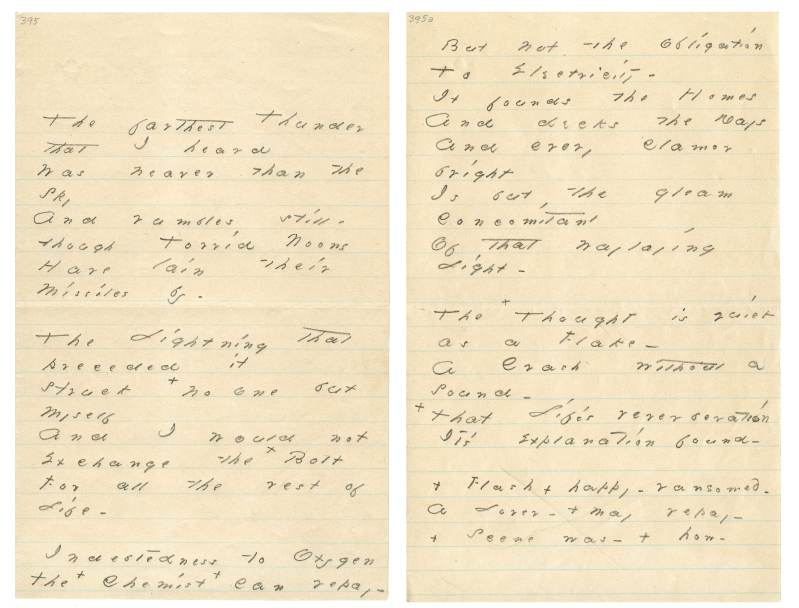
Fig. 6. AC 395, “The farthest Thunder,” about 1884.
Courtesy of the Amherst College Archives & Special Collections.
Let the Chemist keep his atomistic faith in the conservation of matter. What’s conserved in this late poem is not matter but rather the form of its displacement, a “Crash” still sending out its soundless reverberations—a wave whose “Amplitude no end invades –” (Fr. 1446A).
It’s my very tentative impression that the vernacular physics of Dickinson’s late writing is more “undulatory” than that of her earlier work. In correlating some of this late writing with the emergence of new technologies, the telephone and the phonograph, in the final decades of Dickinson’s life, I’m running the risk of technological determinism. As Sabine Kim rightly stresses, the “phonographic logic” (173) of Dickinson’s poems anticipated by some years the commercial emergence of sound recording; it was “not purely a result of new media technologies so much as an intensification of already existing ideas in nineteenth-century America” (174). For Dickinson, I suspect that the mostimportant of these “already existing ideas” concerned the intermedial character of her own writing, the subject—I think—of another great poem of the undulatory world from her last years, “The Spirit lasts – but in what mode –” (Fr. 1627B/MS AC 726):
The Music in the Violin
Does not emerge alone
But Arm in Arm with Touch, yet Touch
Alone – is not a Tune –
The Spirit lurks within the Flesh
Like Tides within the Sea
That make the Water live,
What would the Either be? (Fr. 1627B, about 1883 [lines 5-12])
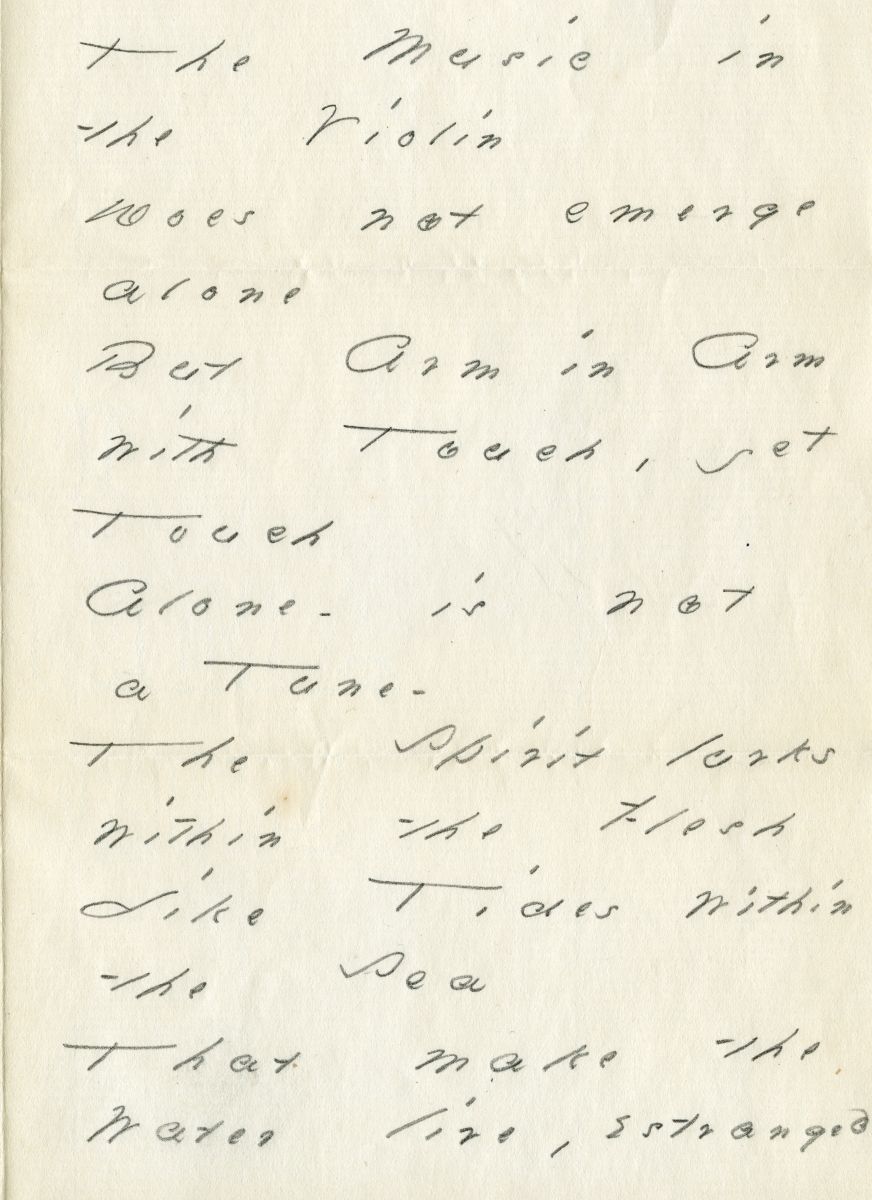
.jpg)
Fig. 7. AC 726, “The Spirit lasts – ,” about 1883 (detail).
Courtesy of Amherst College Archives & Special Collections.
Dickinson’s poem echoes that central conundrum of nineteenth- and early twentieth-century physics, the apparent necessity of the “luminiferous ether”: If light is a wave, it must have some material medium of propagation, however subtle and elusive. Dickinson too in her own idiom rejects both the idea of a wave without a material medium, and that of matter uninvested with signifying form: “estranged, / What would the Either be?” (Fr. 1627B). For Dickinson, the duality of wave and particle described questions of personal immortality as well as the endurance of her poetry. Is a lasting poem more like the obdurate, unique, indivisible atom, or like the endlessly propagating form of the wave? Under other descriptions, readers continue to ask these questions of Dickinson’s poetry to this day.
Mary Loeffelholz, Northeastern University
Notes
[1] See, for example, Werner Heisenberg, The Physical Principles of the Quantum Theory [1930, 1949] translated by Carl Eckart and F. C. Hoyt. Dover Books, 1998.
[2] See, for example, Joan Kirkby’s “‘We Grow Accustomed to the Dark’: Emily Dickinson, Religion and 19th-Century Science,” in The Dark Side. Edited by Chris Hartney and Andrew McGarrity. RLA Press, 2004; Robin Peel’s Emily Dickinson and the Hill of Science. Farleigh Dickinson University Press, 2010; Richard E. Brantley’s Emily Dickinson’s Rich Conversation: Poetry, Philosophy, Science. Palgrave, 2013; and Marcia Lemos and Miguel Ramalheto Gomes, eds., Exchanges between Literature and Science from the 1800s to the 2000s. Cambridge Scholars Publishing, 2017.
Works Cited
Hitchcock, Edward. “The Wonders of Science Compared with the Wonders of Romance.” Religious Truths, Illustrated from Science in Addresses and Sermons on Special Occasions. Boston: Phillips, Sampson, and Company, 1857, pp. 132-91.
Kim, Sabine. “Sonic Events, Media Archives, Poetic Transfers: Emily Dickinson and the Phonograph.” Intermedial Arts: Disrupting, Remembering and Transforming Media. Edited by Leena Eilittä, Liliane Louvel, and Sabine Kim. Cambridge Scholars Publishing, 2012, pp. 173-89.
Prescott, George B. “The Telephone and the Phonograph.” Scribner’s Monthly: An Illustrated Magazine for the People, vol. 15, no. 6, April 1878: pp. 848-58.
Image Credits
Fig. 1. AC 641, “We send the / Wave to find / the Wave –” (detail), about 1884. Courtesy of Amherst College Archives & Special Collections. For entire ms., see links: https://acdc.amherst.edu/view/asc:8657/asc:8659 & https://acdc.amherst.edu/view/asc:8657/asc:8660
Fig. 2. Prescott, George B. “The Telephone and the Phonograph,” Scribner’s Monthly: An Illustrated Magazine for the People, 15.6 (April 1878): 849. Courtesy of Cornell University Library. For a link to the image, see:
http://ebooks.library.cornell.edu/cgi/t/text/pageviewer-idx?c=scmo;cc=scmo;rgn=full%20text;idno=scmo0015-6;didno=scmo0015-6;view=image;seq=863;node=scmo0015-6%3A15;page=root;size=100
Fig. 3. Mr. Edison at the close of five days and nights of continued work perfecting the early wax cylinder type of phonograph, June 16, 1888. For source image, see: http://theatlantic.tumblr.com/post/13110818924/life-on-this-day-in-1877-thomas-edison)
Fig. 4. AC 92-11/12, “The Chemical convic -/ tion,” about 1865. Courtesy of Amherst College Archives & Special Collections. For entire ms., see this link: https://acdc.amherst.edu/view/asc:14120/asc:14125
Fig. 5. AC 506, “Water makes many / Beds,” about 1877. Courtesy of the Amherst College Archives & Special Collections. For ms., see this link: https://acdc.amherst.edu/view/asc:16913
Fig. 6. AC 395, “The farthest Thunder,” about 1884. Courtesy of the Amherst College Archives & Special Collections. For ms., see this link:
https://acdc.amherst.edu/view/asc:16727 & https://acdc.amherst.edu/view/asc:16727/asc:16730
Fig. 7. AC 726, “The Spirit lasts – ,” about 1883 (detail). For entire ms., see links:
https://acdc.amherst.edu/view/asc:2338 & https://acdc.amherst.edu/view/asc:2338/asc:2341 & https://acdc.amherst.edu/view/asc:2338/asc:2342 & https://acdc.amherst.edu/view/asc:2338/asc:2343



